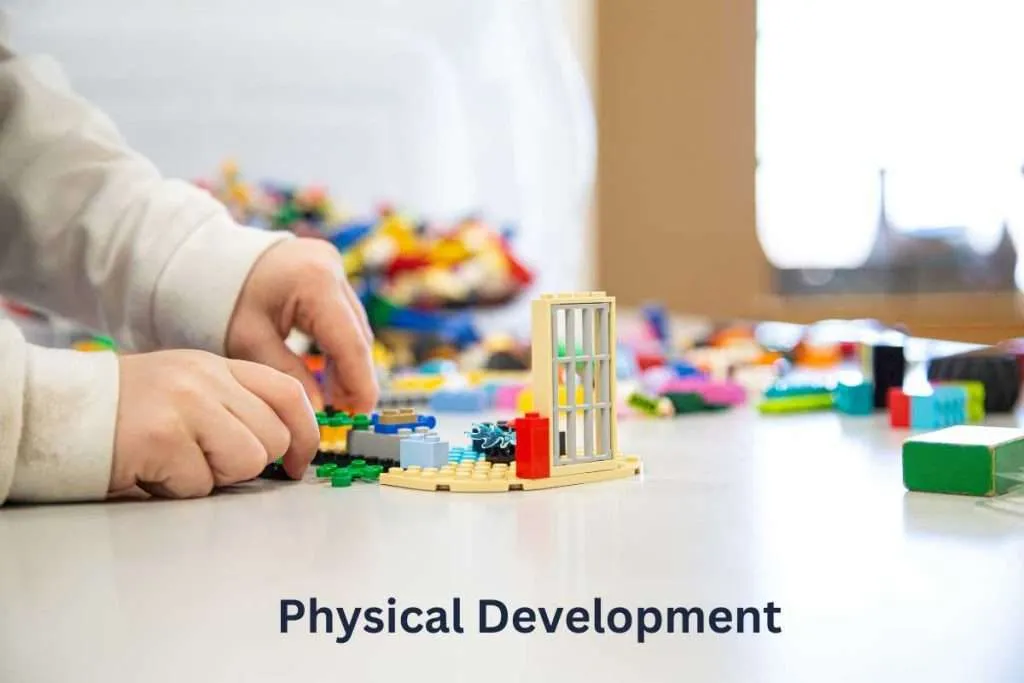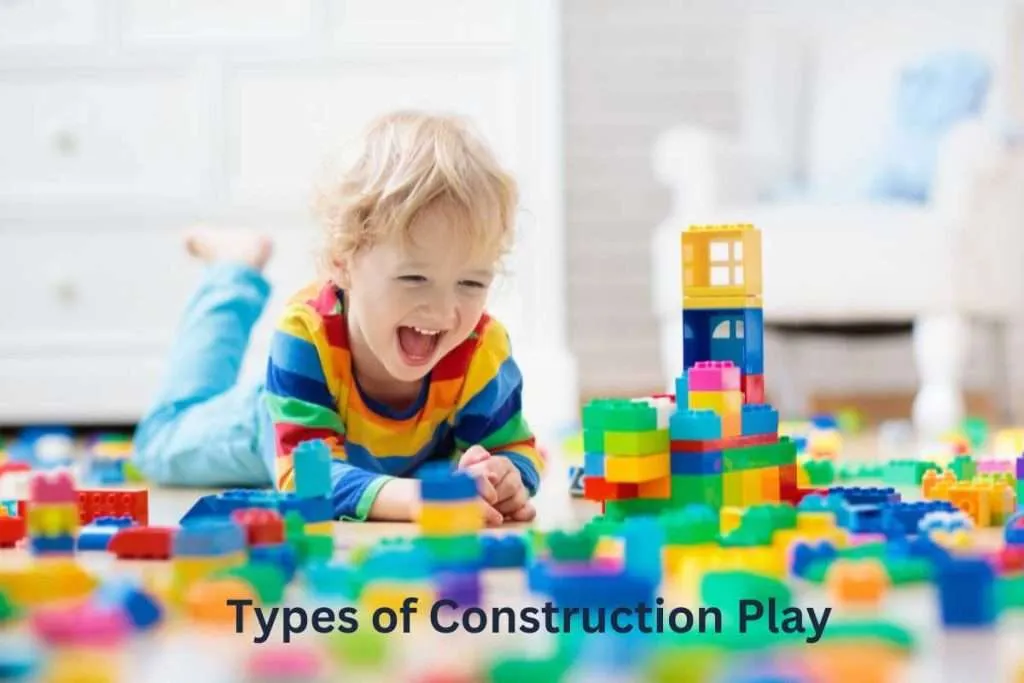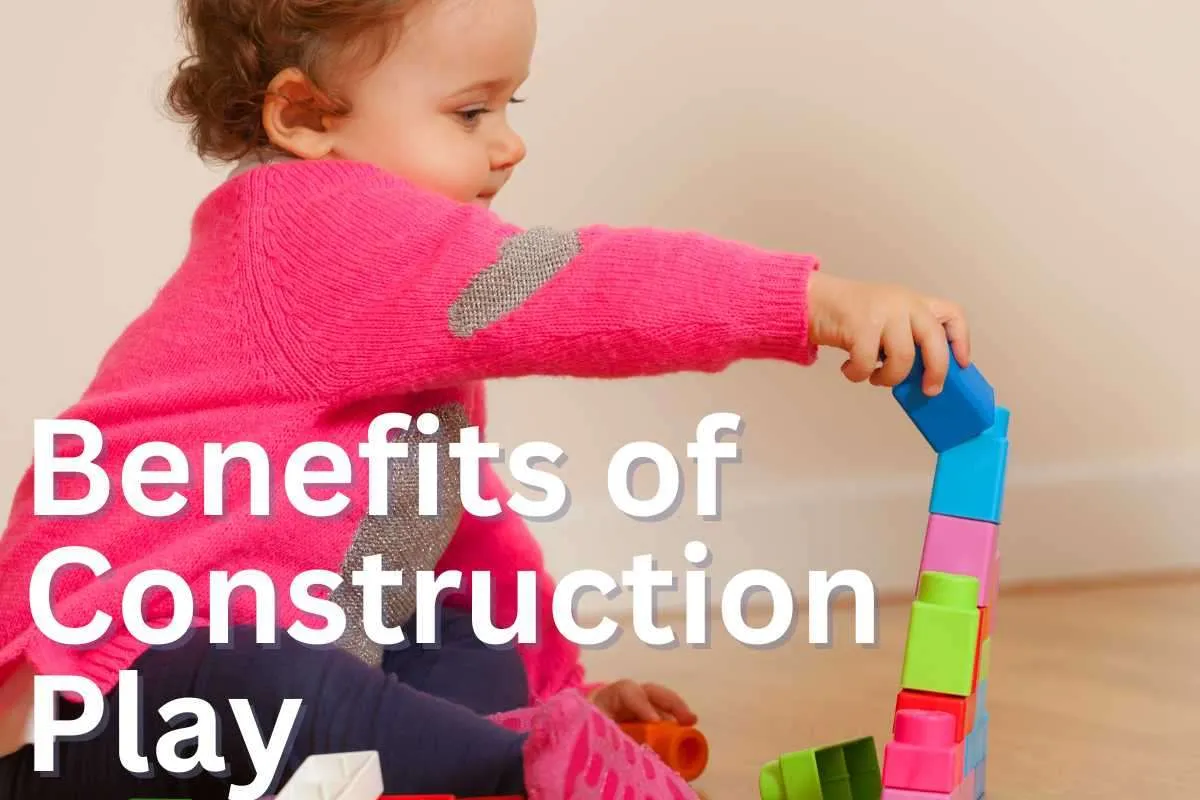Pondering the significance of construction play in a child’s life and curious about its multifaceted benefits? You’re far from alone. Many educators and parents recognize the joy children derive from building and constructing, but might not be fully aware of the profound developmental impacts it offers.
Fortunately, construction play, whether with blocks, LEGO, or other building materials, is a powerhouse of learning, offering a plethora of cognitive, physical, and social benefits.
Drawing from my expertise in early childhood development and play-based learning, I’ve constructed a comprehensive guide that delves deep into the myriad construction play benefits.
Let’s build our understanding together and uncover the foundational skills and values that construction play instills in young minds.
Key Takeaways
| Benefit | Description |
|---|---|
| Motor Skills Development | Handling and connecting pieces refines fine motor skills. |
| Spatial Awareness | Understanding how pieces fit together enhances a child’s grasp of space and dimensions. |
| Problem Solving | Figuring out how to create stable structures or achieve desired designs fosters problem-solving skills. |
| Creativity Boost | Children can invent various designs, promoting imaginative thinking. |
| Cognitive Development | Planning and executing construction projects enhance logical thinking and reasoning abilities. |
| Math Skills | Counting pieces, understanding symmetry, and recognizing geometric shapes introduce basic math concepts. |
| Language Development | Describing their structures, the building process, or collaborating with others can improve vocabulary and communication skills. |
| Social Skills | Building in groups encourages teamwork, sharing, negotiation, and cooperation. |
| Persistence & Patience | Construction challenges teach children to persevere and be patient until they achieve their goal. |
| Hand-Eye Coordination | Aligning and connecting pieces requires coordination between vision and hand movement. |
| Achievement & Confidence | Successfully building a structure gives children a sense of accomplishment, boosting their self-confidence. |
| Understanding Cause and Effect | Observing the consequences of structural decisions (e.g., why a tower falls) teaches children about cause and effect. |
What Is Construction Play?

Construction play is described as a kind of play where a child is given pieces of toys to use and manipulate to construct something new like a building structure. Anything that involves manipulation, stacking, assembling and sorting is considered construction play.
Common household items like cardboard boxes can be used for simple yet fun construction play. Children can stack these cardboard boxes on top of each other to create a tower. But there are toys such as construction toys that are designed for construction play. These toys make construction play more fun and exciting for little kids.
There are many developmental and learning benefits to construction play. Let us take a look at some of these benefits.
Fine Motor Skills
Fine motor skills are abilities that allow us to perform precise movements or actions using a small group of muscles in our hands, fingers and wrists. For instance, holding a pencil, tying shoelaces, buttoning a shirt or cutting a piece of paper using a pair of scissors make good use of fine motor skills.
Construction toys often come with play pieces that can be manipulated by a child’s hands and fingers. Picking up a play piece or pushing a transport truck back and forth or even putting construction blocks on top of each other are good ways to practice and hone fine motor skills. The more often a child uses his fine motor skills, the better.
Gross Motor Skills
Gross motor skills are abilities that involve the use of large groups of muscles in our bodies to perform purposeful movements. Actions like jumping, sitting upright, walking, running and jogging are only a few examples of movements that require gross motor skills.
Constructive play often requires kids to become mobile, active and move parts of their bodies as they build. Children should also be either sitting up right or standing when engaged in construction play. As they move their construction toys from one place to the next, they fine tune their gross motor skills which lends to healthy physical development.
Cognitive Benefits
Construction play is a great way to enhance your child’s cognitive development. It helps to improve their focus, curiosity, and problem-solving skills.

Problem-Solving
Construction play encourages children to experiment and problem-solve. It helps them to think outside of the box and come up with unique solutions to challenges they face. By building with wooden blocks
or other materials, children learn to identify and solve problems on their own.
Mathematical Concepts
Construction play is an excellent way to introduce mathematical concepts to children in building and construction projects. It helps them to understand counting, addition, subtraction, and other maths concepts and sharpen crucial skills for them. They also learn about geometry, shape recognition, and sorting and other critical thinking skills.
Language Development
Construction play toys can help to develop language skills children. As they build, they may describe what they are doing, ask questions, and give instructions. This helps to improve their vocabulary, grammar, and communication skills. Additionally, construction play can help to foster a love of reading and writing.
Creativity and Imagination
Construction play encourages children to use their creativity and imagination. It allows them to explore and experiment with different materials and shapes, and to create their own fantasy worlds. This type of imaginative play can help to develop their creativity and problem-solving skills.
Physical Development
Construction play offers numerous benefits for your child’s physical development. Through hands-on activities, your kids develop their motor skills, hand-eye coordination, and spatial awareness.
Motor Skills
Construction play helps your child develop both fine and gross motor skills. Fine motor skills involve the use of small muscles in the hands and fingers, while gross motor skills involve large muscles in the arms, legs, and torso. Building with blocks, stacking cups, and manipulating small objects are all great ways to improve fine motor skills. Meanwhile, carrying heavy objects, pushing and pulling toys, and crawling through tunnels can help improve gross motor skills.
Spatial Abilities
Spatial abilities are essential for understanding the world around us. They involve the ability to understand and manipulate objects in three-dimensional space. Construction play can help your child develop their spatial abilities by encouraging them to think about symmetry, balance, and proportion. Activities like building with blocks, creating patterns, and constructing structures can all help improve spatial awareness.

Social and Emotional Growth
Construction play is not only fun, but it also has significant benefits for your child’s social and emotional growth. Through block play, your child will develop important skills such as cooperation, teamwork, and empathy.
Cooperation and Teamwork
Construction play requires your child to work with others (cooperative play), take turns, and share materials. This helps them develop their social skills and learn how to cooperate with others. By working together to build something, your child will learn valuable teamwork skills that will benefit them throughout their life.
Confidence and Self-Esteem
As your child builds structures, they will feel a sense of pride and accomplishment. This can help boost their confidence and self-esteem. By completing construction projects, your child will learn that they are capable of achieving their goals through hard work and perseverance.
Resilience and Persistence
Construction play can also help your child develop resilience and persistence. When their structure falls apart or doesn’t turn out the way they wanted it to, they will learn how to problem-solve and try again. Through this process, they will learn the value of persistence and perseverance.
Types of Construction Play
There are various types of construction play that children can engage in. Here are some of the most common types of construction play:
Manipulative Play
Manipulative play involves using small objects to build structures. This type of play is perfect for younger children who are still developing their fine motor skills. Examples of manipulative toys include Legos, magnetic tiles, and building blocks.
Loose Parts Play
Loose parts play involves using a variety of materials to build structures. This type of play is perfect for older children who are looking for a more open-ended building experience. Examples of loose parts include sticks, rocks, and cardboard boxes.
Open-Ended Play
Open-ended play involves using a variety of materials to build structures without any specific instructions or guidelines. This type of play is perfect for children who are looking for a more creative and imaginative building experience. Examples of open-ended play include building forts, creating sculptures, and designing imaginary worlds – the options for pretend play are endless.
When choosing age-appropriate construction toys, it’s important to consider the child’s age and developmental stage. Younger children may benefit from manipulative toys, while older children may prefer loose parts or open-ended play.
There are many resources available for parents and caregivers looking to encourage construction play in children. Local libraries and community centers often have building materials available for use, and there are many online resources with ideas for construction play activities.

Practical Applications
Here are some practical applications of construction play that you can implement in various settings.
Home Activities
At home, you can encourage your child to engage in construction play by providing them with materials such as blocks, cardboard boxes, and Legos. You can also create a designated construction area where your child can build castles, houses, and other structures.
You can also incorporate cooking and baking into construction play. For example, your child can build a gingerbread house or create a pizza with various toppings. This not only promotes creativity but also helps your child develop fine motor skills.
Educational Settings
In early childhood education, construction play is often incorporated into the curriculum. Teachers can provide students with various materials such as blocks, clay, and recycled materials to encourage building and problem-solving skills.
Construction play can also be used to teach mathematical concepts such as counting, shapes, and symmetry. Science concepts such as cause and effect, gravity, and balance can also be explored through construction play.
Brain Development
Construction play has been shown to have a positive impact on brain development. When children engage in construction play, they are using their imagination and creativity, which helps to develop their cognitive skills.
Through construction play, children also learn to take risks and make mistakes, which helps to develop their problem-solving skills and resilience. This type of play also helps to develop fine motor skills, hand-eye coordination, and spatial reasoning.
Frequently Asked Questions
What are some activities that involve construction play for preschoolers?
Preschoolers can engage in various activities that involve construction play, such as building with blocks, creating structures with cardboard boxes, building with Legos, and constructing with clay or playdough.
What are some materials that can be used for construction play?
Materials that can be used for construction play include blocks, Legos, cardboard boxes, sticks, clay, playdough, sand, and more. Children can use their imagination to create structures with any material they have access to.
How does constructive play help develop problem-solving skills?
Constructive play helps develop problem-solving skills by encouraging children to think creatively and critically. When children engage in construction play, they have to use their imagination and figure out how to make their ideas come to life. They must also work through challenges that arise during the construction process, such as figuring out how to balance a structure or how to make it stable.
What are some benefits of construction play for children’s cognitive development?
Construction play has numerous benefits for children’s cognitive development. It helps improve their spatial awareness, hand-eye coordination, and fine motor skills. It also helps them develop their creativity, imagination, and problem-solving skills.
What are some examples of structured play that incorporate construction?
Structured play that incorporates construction includes activities such as building a tower with blocks, creating a bridge with cardboard boxes, building a car with Legos, and constructing a castle with sand.
Construction play can help children develop social skills by encouraging them to work together and communicate effectively. When children engage in construction play with others, they learn how to share materials, take turns, and collaborate to achieve a common goal. This type of play also helps children develop their confidence and self-esteem as they work together to create something new.





